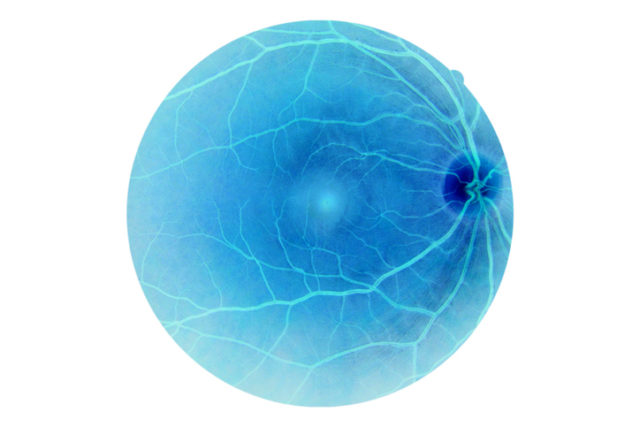
Adverum Biotechnologies disclosed in late April that a patient treated with its experimental gene therapy for diabetic macular edema (DME) experienced an unexpected drop in eye pressure, inflammation, and vision loss. That patient has been treated and is improving, though monitoring of the remaining patients has revealed similar problems in four others—two of which required surgery.
Redwood City, California-based Adverum does not know yet know the cause of the eye problems, and DME patients can have multiple underlying conditions that can affect the eye, said CEO Laurent Fischer. But based on what appears to be a toxicity associated with the high dose of the gene therapy, Adverum will no longer develop the gene therapy for treating DME.
“Gene therapy drug development is a relatively new field,” Fischer said, speaking on a July 22 conference call. “We’re pushing boundaries, and as we all know, dose-finding has been a challenge across many programs.”
The Phase 2 study was designed to evaluate two doses of the Adverum gene therapy, ADVM-022. The eye problems reported in April were observed in week 30 of the clinical trial. Upon learning of the problem, the company unmasked the study and began its inquiry to find the cause.
Treatment of the patient was able to restore some eye pressure and vision in the treated eye, said Chief Medical Officer Julie Clark. She added that it’s too early in the patient’s recovery to speculate on the outcome. But four other patients who developed a rapid decrease in eye pressure did not respond to steroids and required additional treatment. Those problems occurred between 16 weeks and 36 weeks after receiving the high dose. No similar problems were reported in those who received the lose dose of the gene therapy.
Though Adverum no longer plans to develop ADVM-022 for DME, the study is continuing in order to follow patients and review incoming data. Clark said that all patients in the study are expected to pass week 36 of the study by late September. To mitigate the risk, the company now recommends that the gene therapy be given with systemic immunomodulatory drugs. Adverum plans to present more data at the annual meeting of the American Society of Retina Specialists, which is scheduled to hold its annual meeting from Oct. 8 to 12.
DME is a buildup of fluid in the part of the retina called the macula, which can lead to vision problems, even blindness. The condition can be treated with the FDA-approved Regeneron Pharmaceuticals drug aflibercept (Eylea). The once-monthly injectable drug is a fusion protein that blocks VEGF, a signaling protein that promotes the growth of new blood vessels. The Adverum gene therapy uses an adeno-associated viral vector to deliver to eye cells the coding sequence for the aflibercept protein. It’s a one-time treatment that’s meant to enable the eye to sustain production of the therapeutic protein.
In addition to DME, Adverum has been testing ADVM-022 in a separate study in the wet form of age-related macular degeneration, which is caused by blood vessels leaking fluid or blood into the macula. That fluid blurs vision or causes blind spots. Aflibercept injections are also approved for treating wet AMD.
The eye pressure and inflammation observed in the DME study have not been reported in Phase 1 testing of the gene therapy in wet AMD, for either the low or high doses. Adverum said that long-term data from 30 patients in the wet AMD study have shown long-term durability for the therapy and efficacy that was maintained. According to results presented at the Association for Research in Vision and Ophthalmology in April, 60% of patients were injection free for longer than one year and patients had an 85% reduction in annualized injection frequency following a single injection of the low dose. The company plans to evaluate ADVM-022 at the low dose in a future Phase 2 study in wet AMD.
Photo: lightmemorystock, Getty Images








